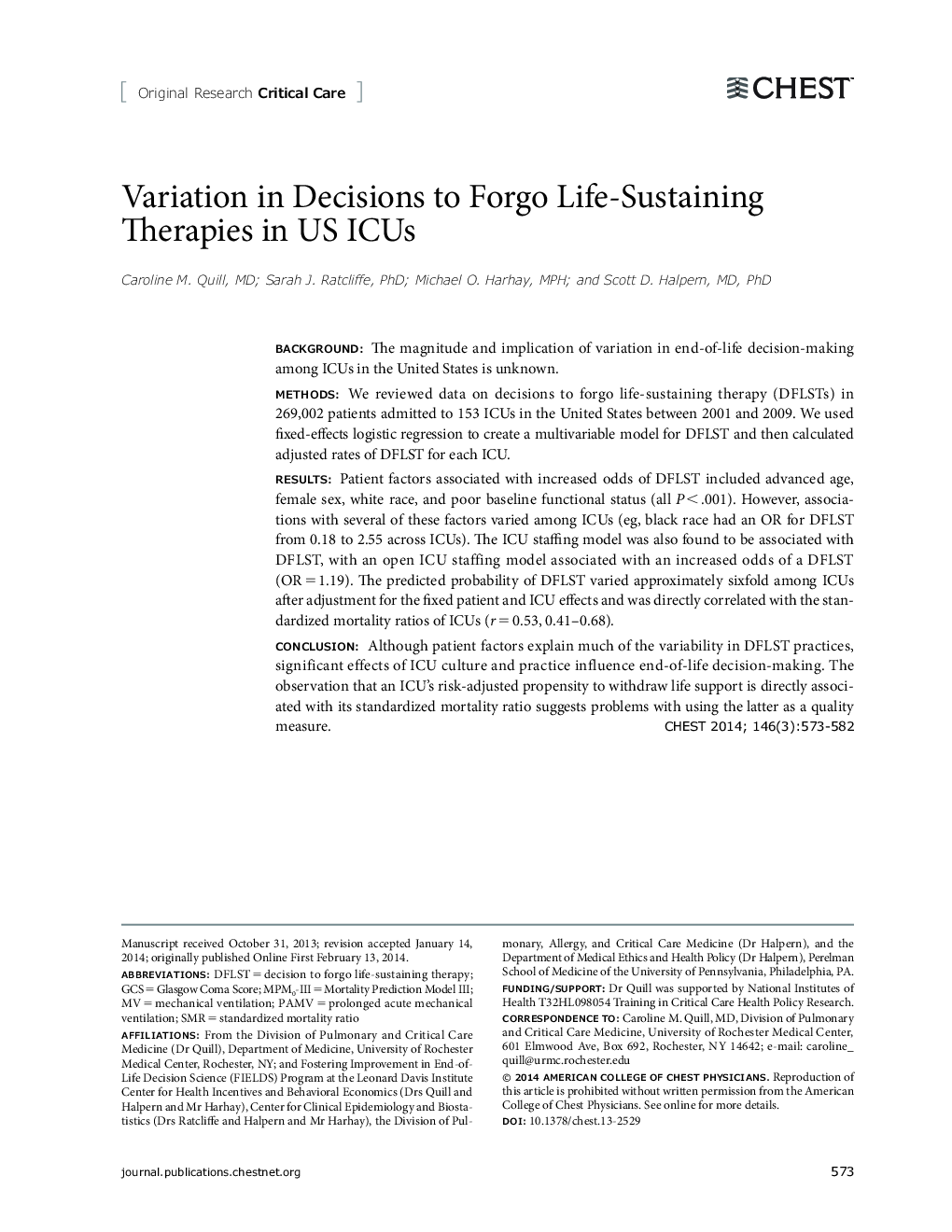| Article ID | Journal | Published Year | Pages | File Type |
|---|---|---|---|---|
| 2899824 | Chest | 2014 | 10 Pages |
BACKGROUNDThe magnitude and implication of variation in end-of-life decision-making among ICUs in the United States is unknown.METHODSWe reviewed data on decisions to forgo life-sustaining therapy (DFLSTs) in 269,002 patients admitted to 153 ICUs in the United States between 2001 and 2009. We used fixed-effects logistic regression to create a multivariable model for DFLST and then calculated adjusted rates of DFLST for each ICU.RESULTSPatient factors associated with increased odds of DFLST included advanced age, female sex, white race, and poor baseline functional status (all P< .001). However, associations with several of these factors varied among ICUs (eg, black race had an OR for DFLST from 0.18 to 2.55 across ICUs). The ICU staffing model was also found to be associated with DFLST, with an open ICU staffing model associated with an increased odds of a DFLST (OR= 1.19). The predicted probability of DFLST varied approximately sixfold among ICUs after adjustment for the fixed patient and ICU effects and was directly correlated with the standardized mortality ratios of ICUs (r= 0.53, 0.41–0.68).CONCLUSIONAlthough patient factors explain much of the variability in DFLST practices, significant effects of ICU culture and practice influence end-of-life decision-making. The observation that an ICU's risk-adjusted propensity to withdraw life support is directly associated with its standardized mortality ratio suggests problems with using the latter as a quality measure.
